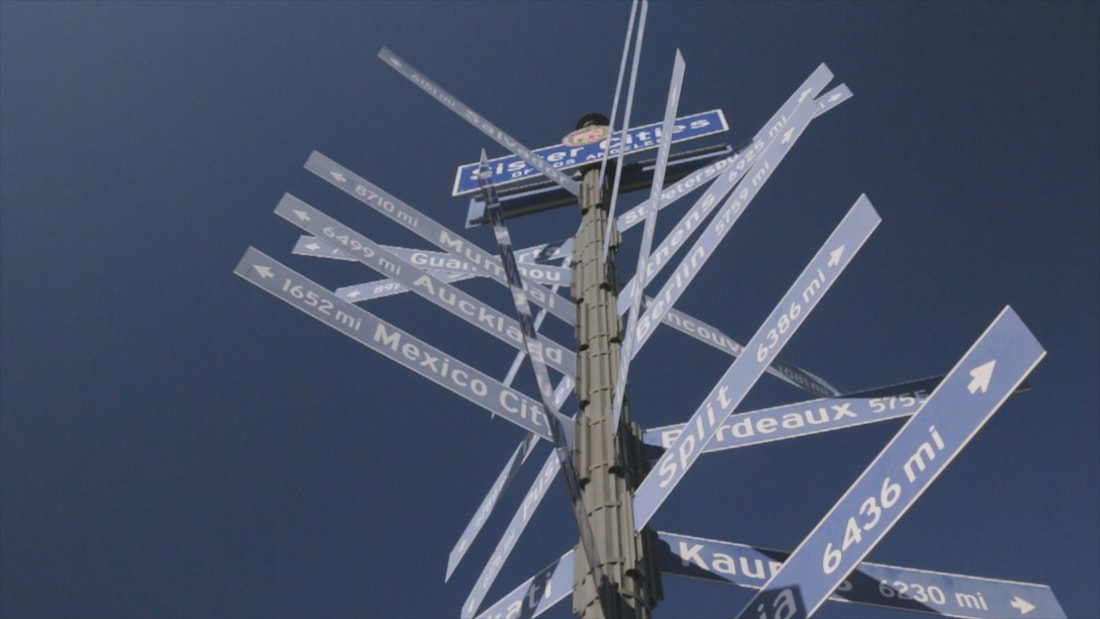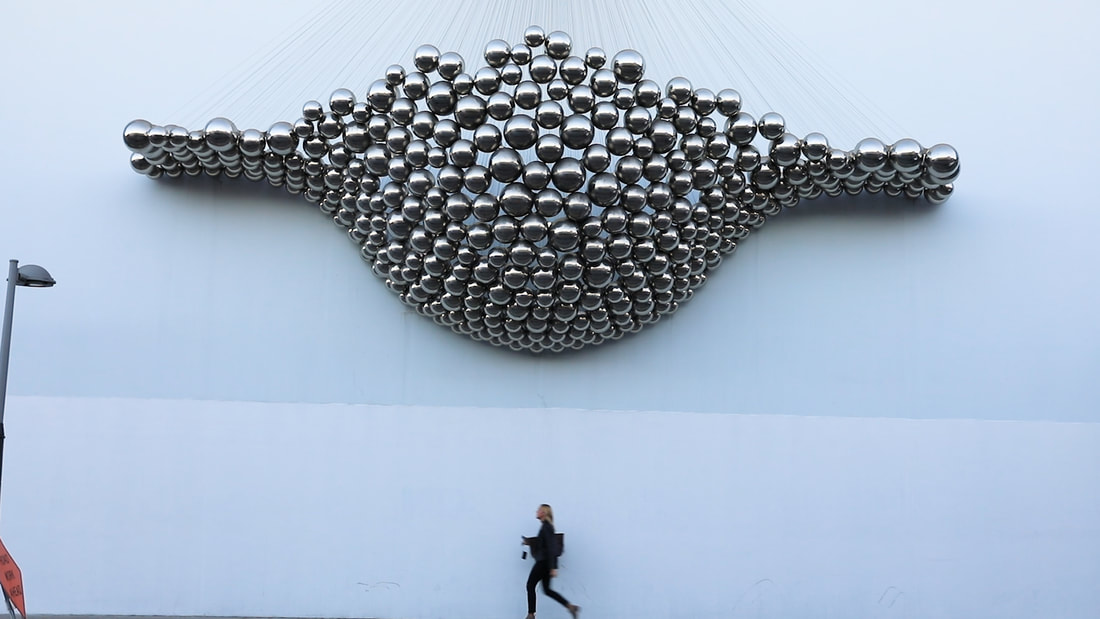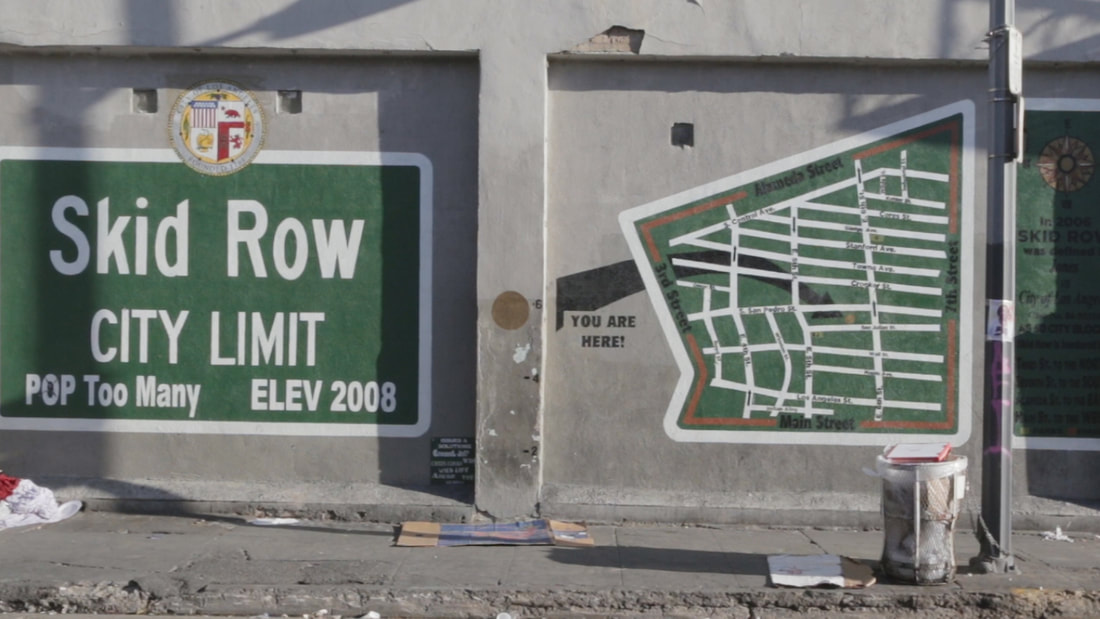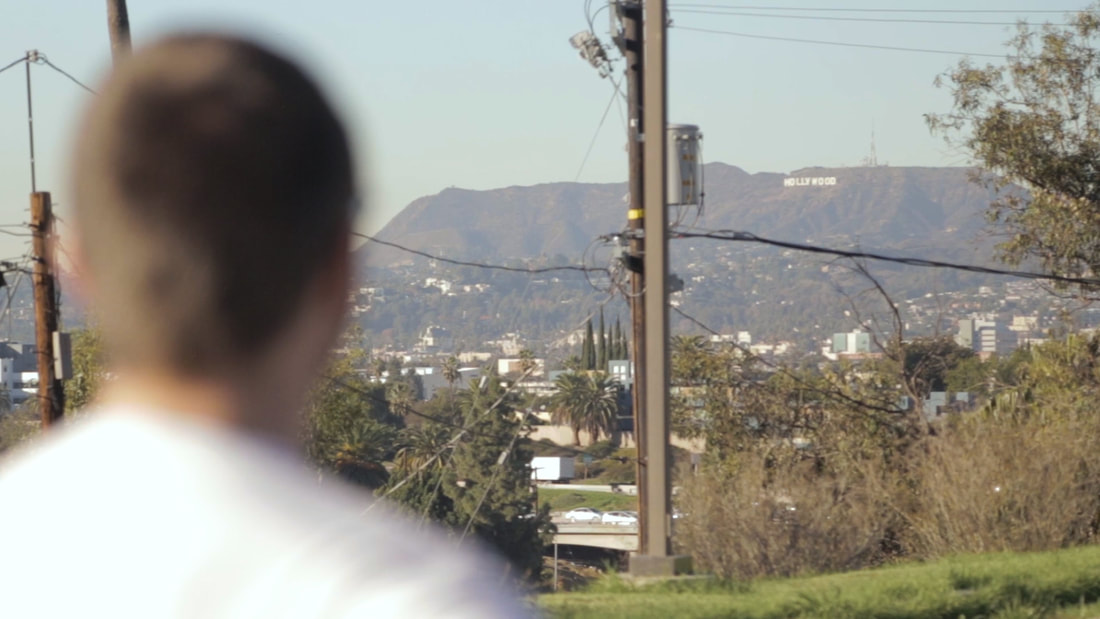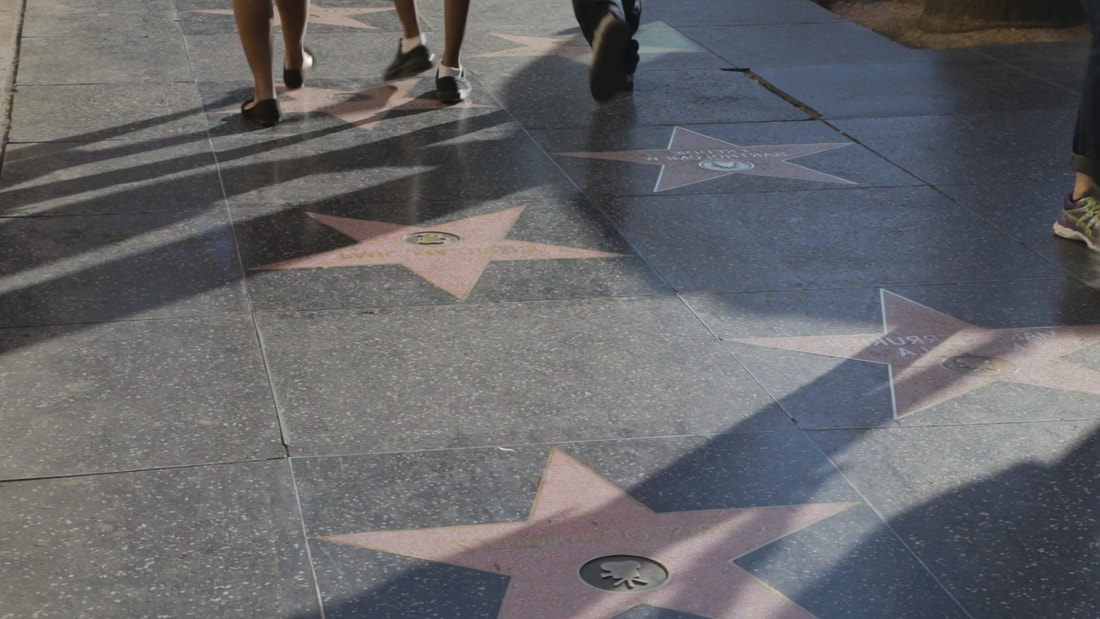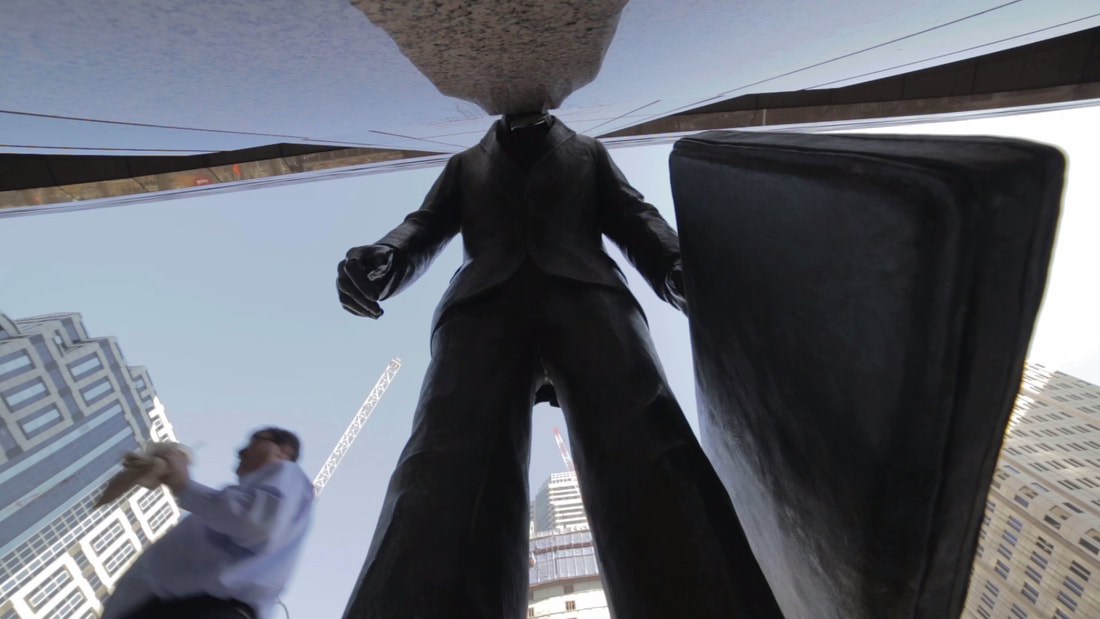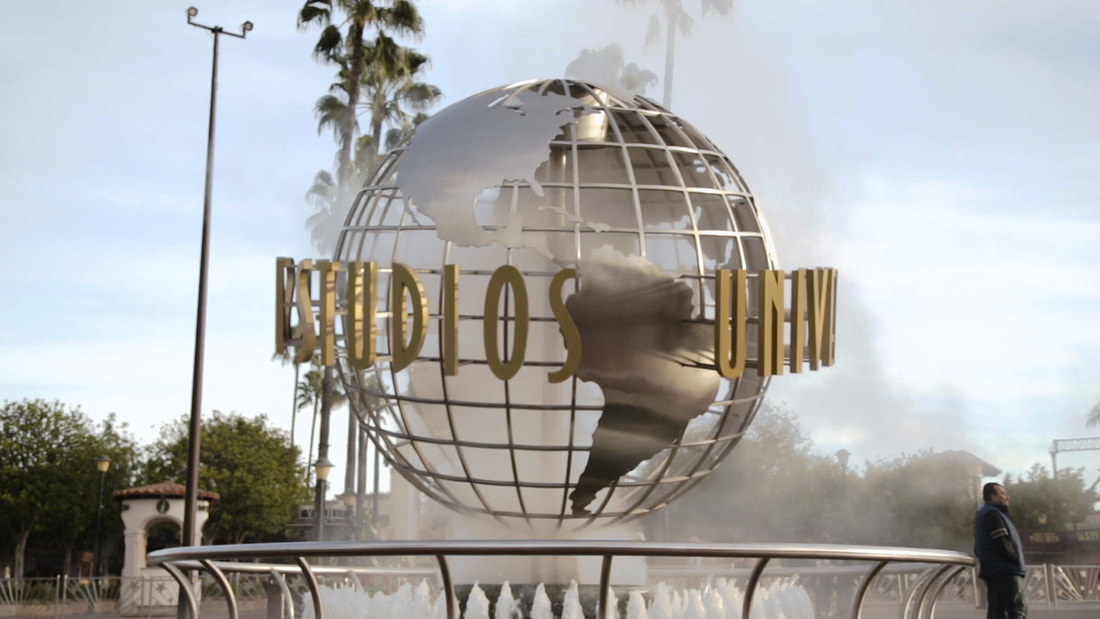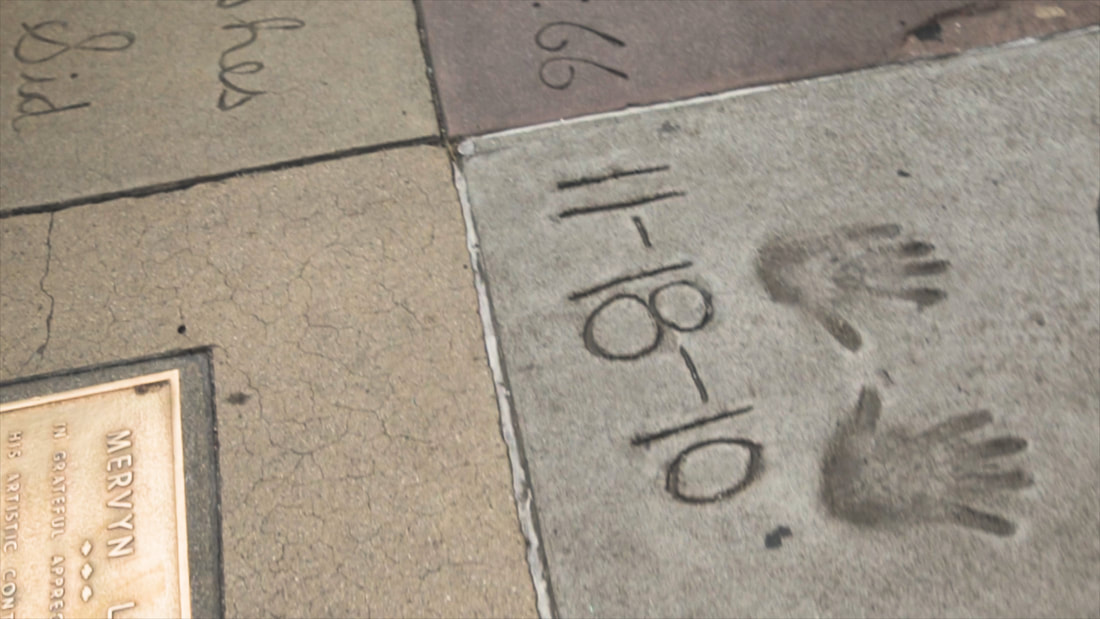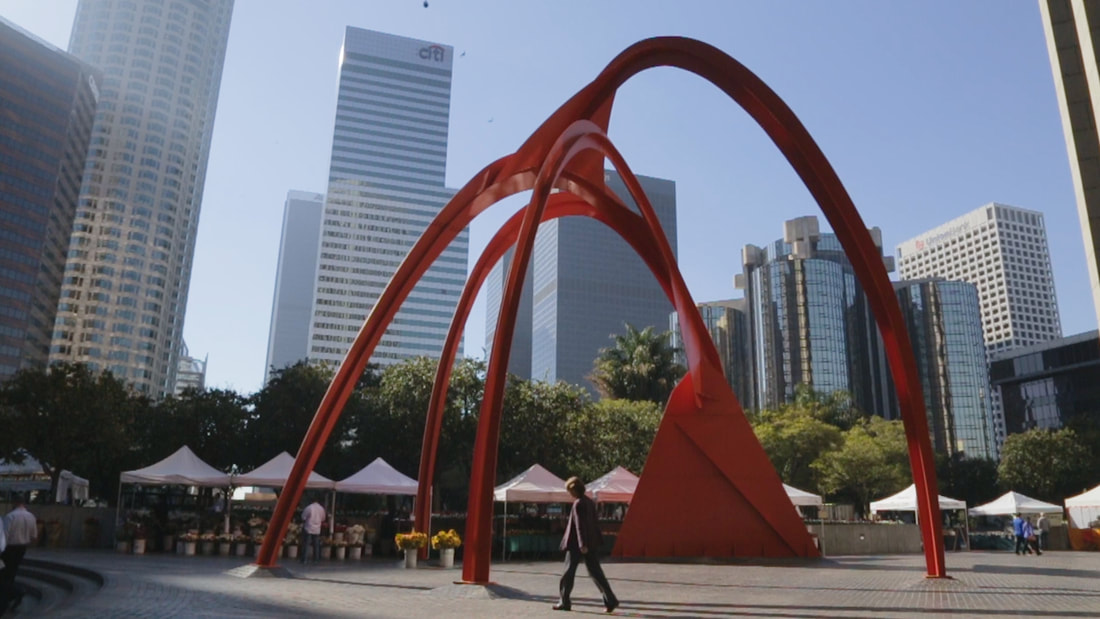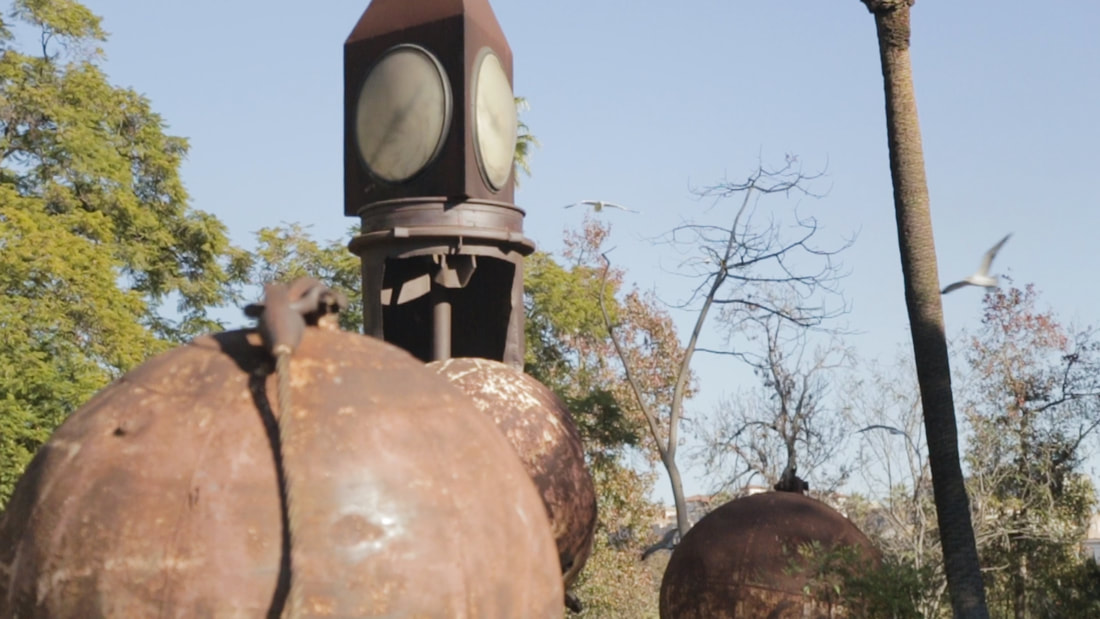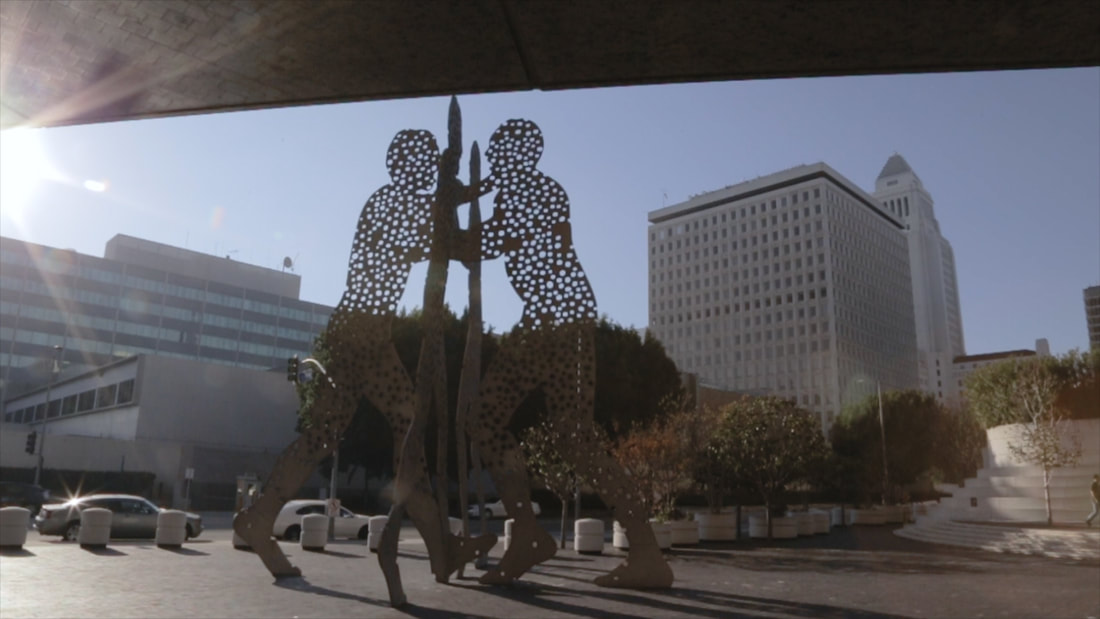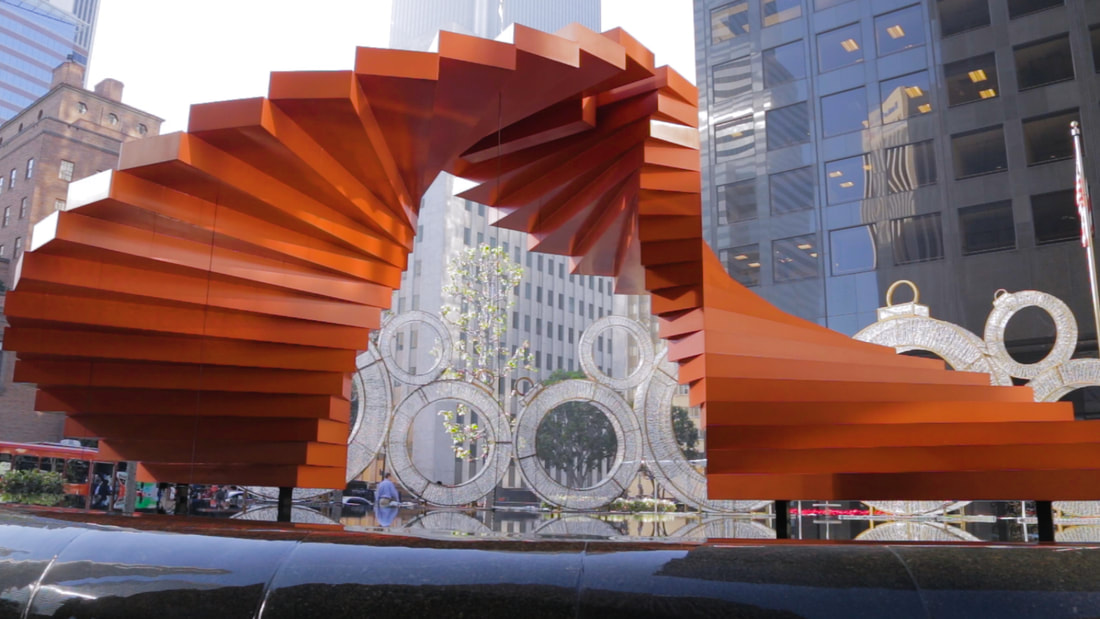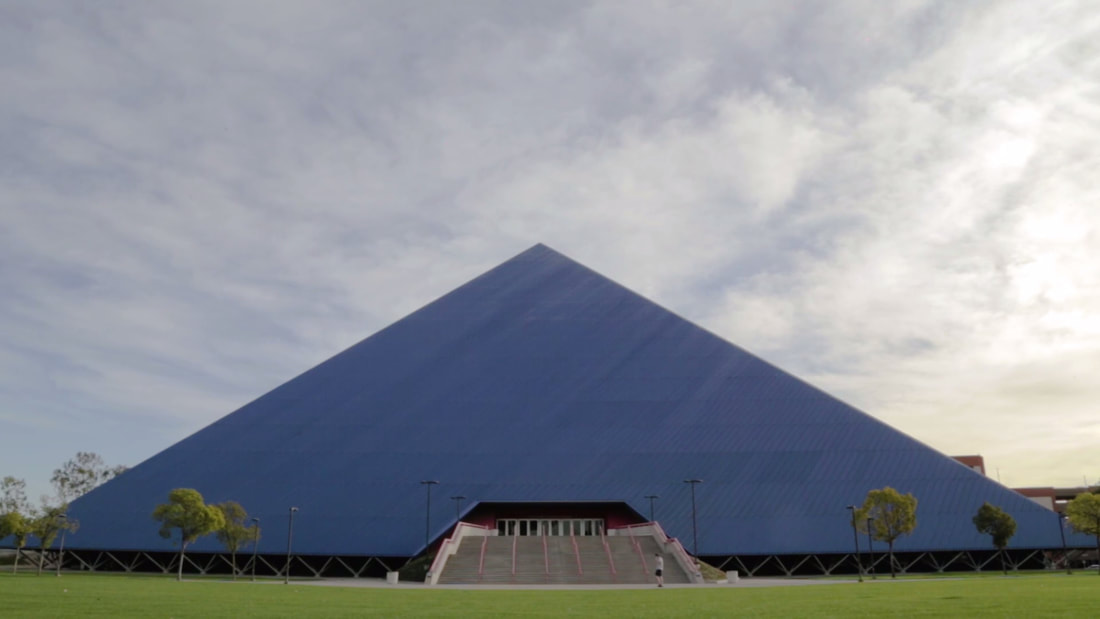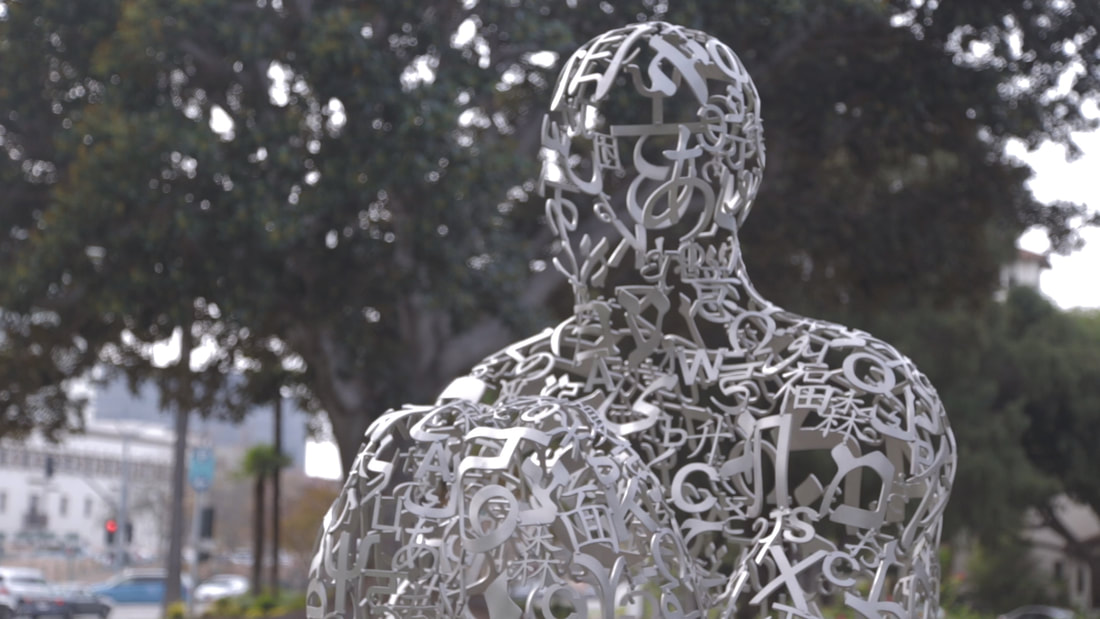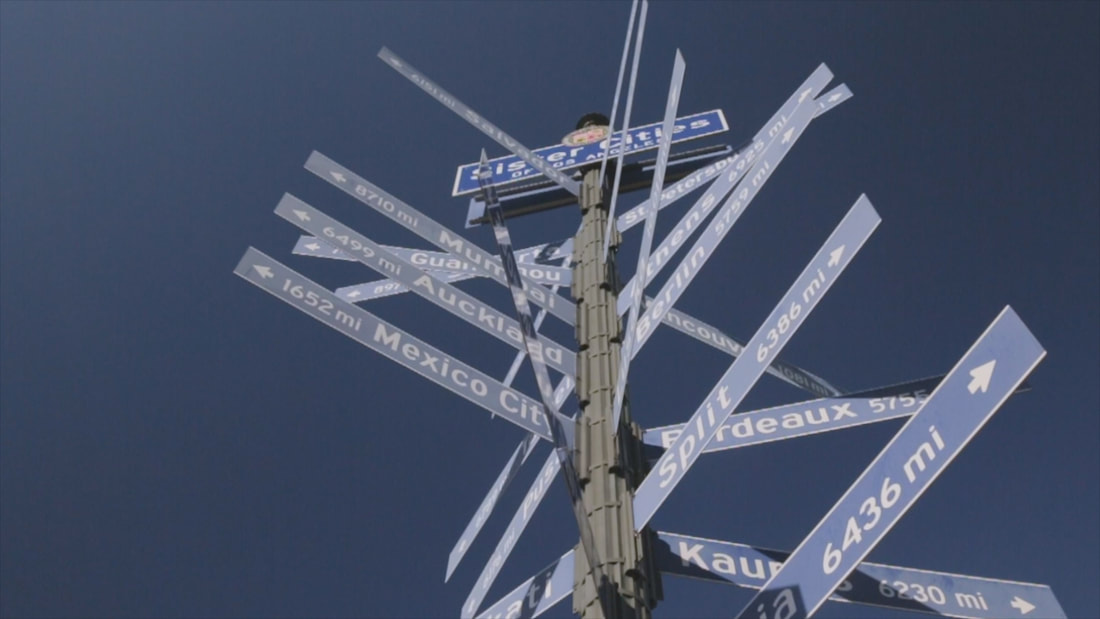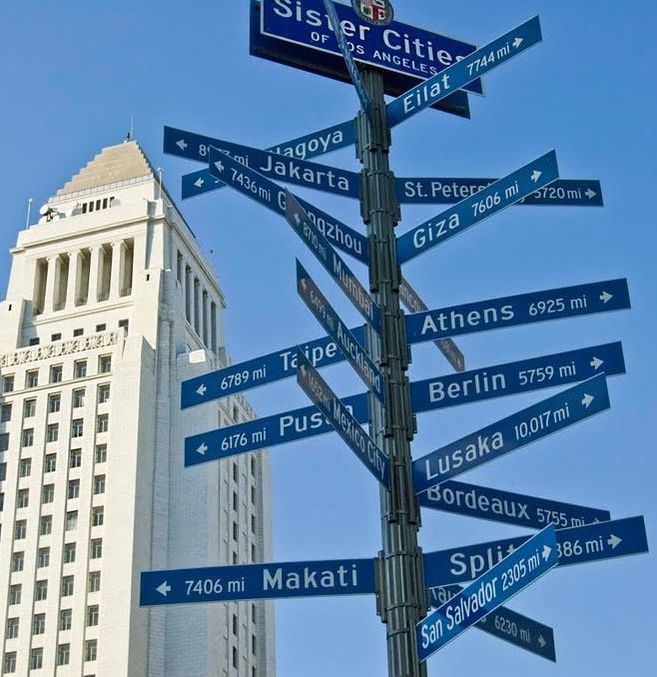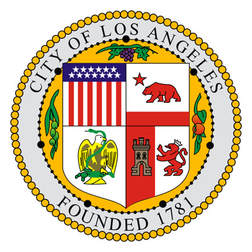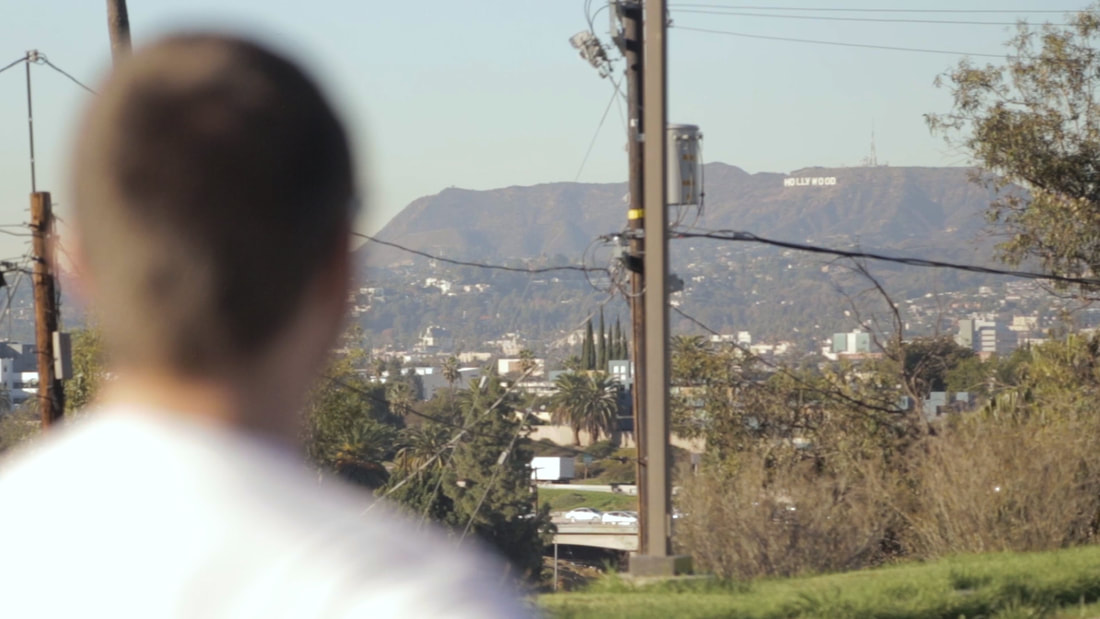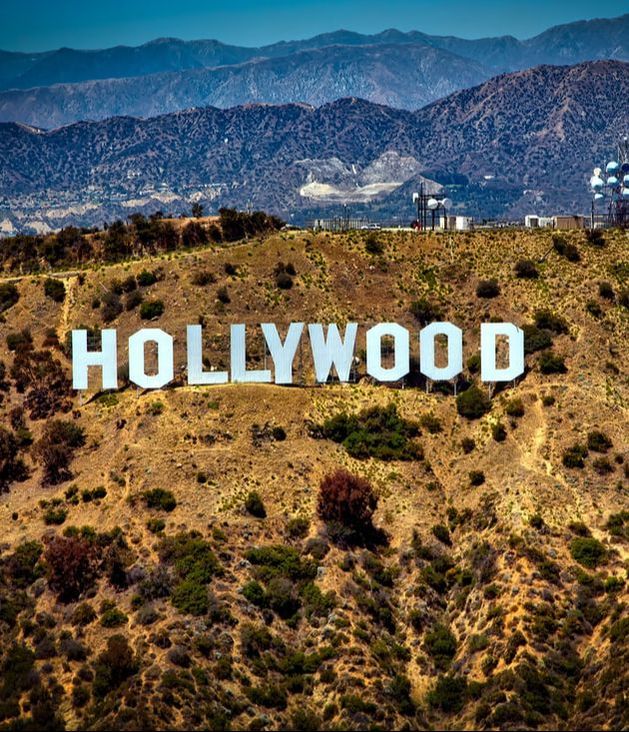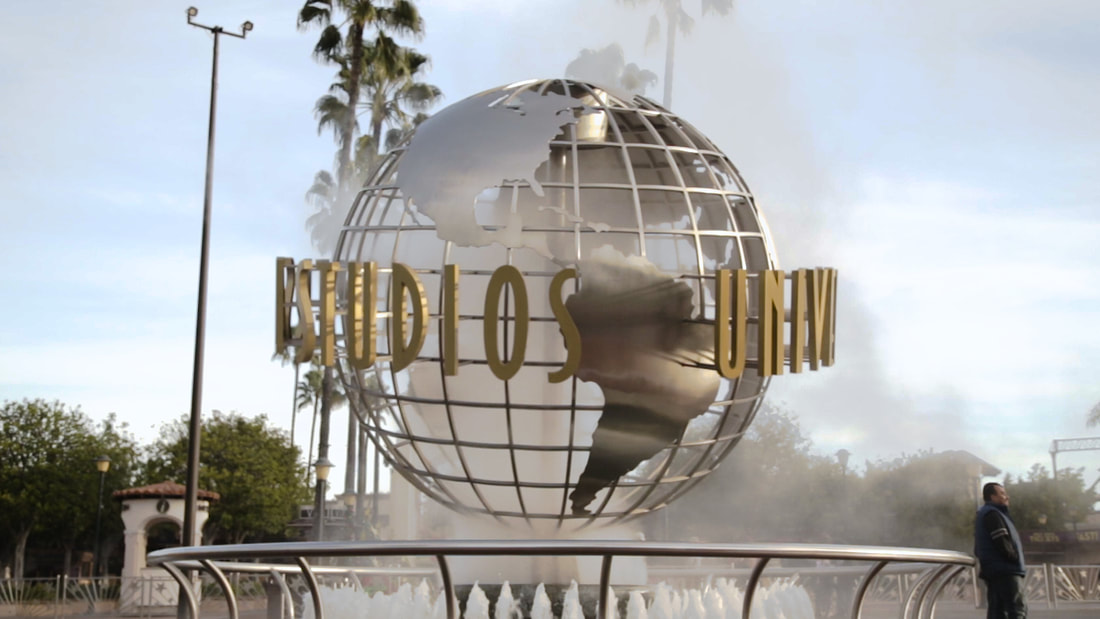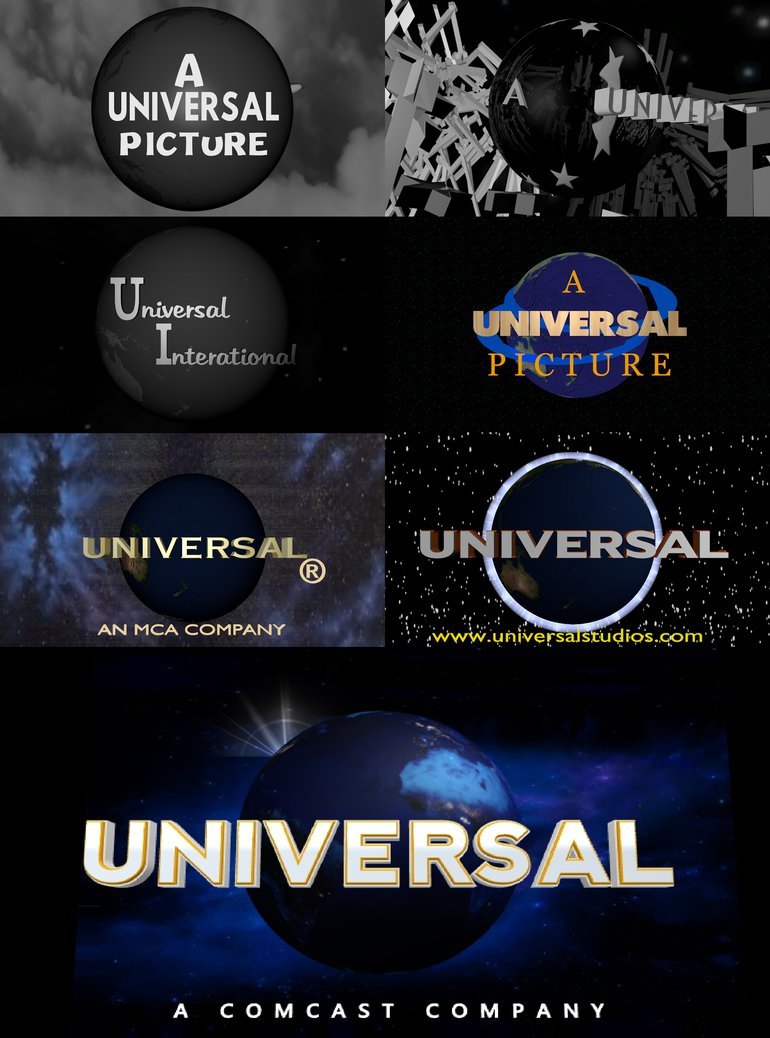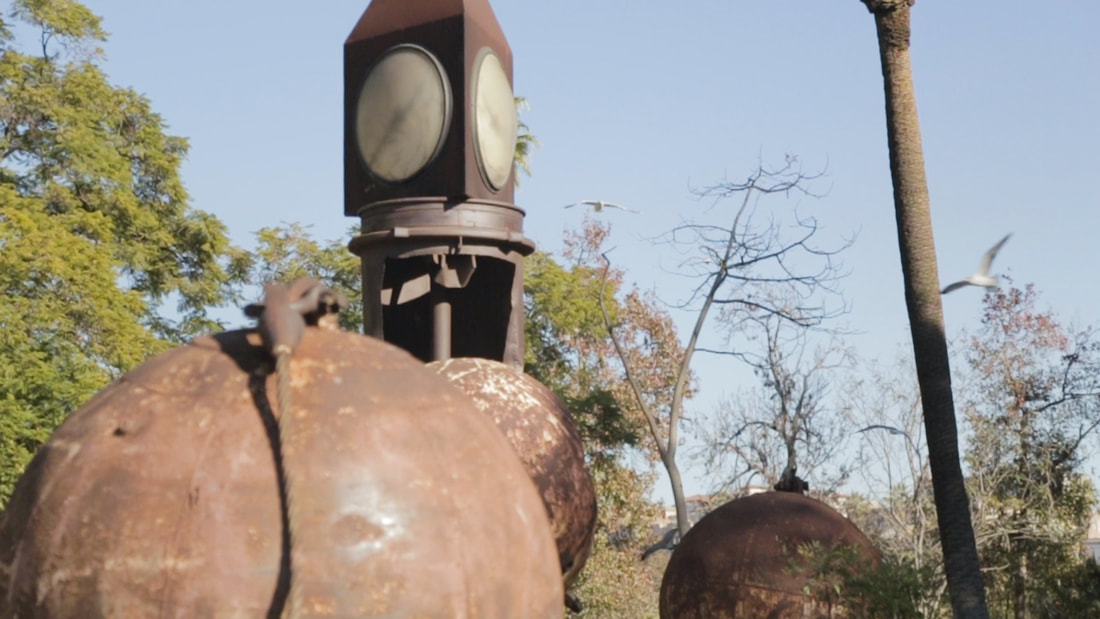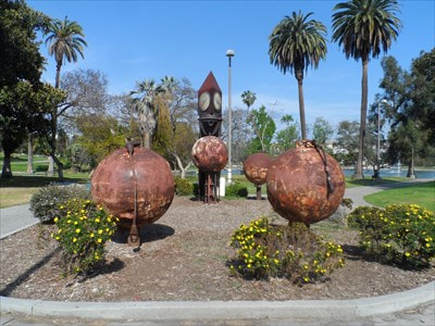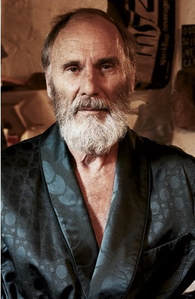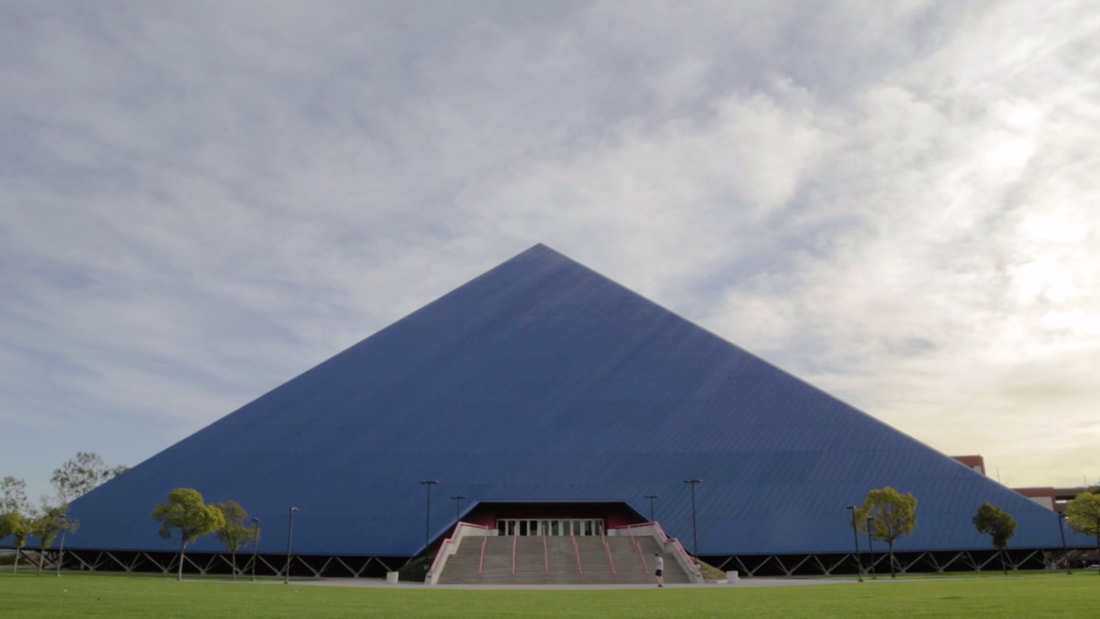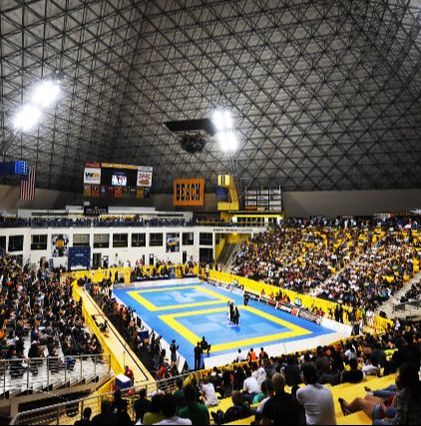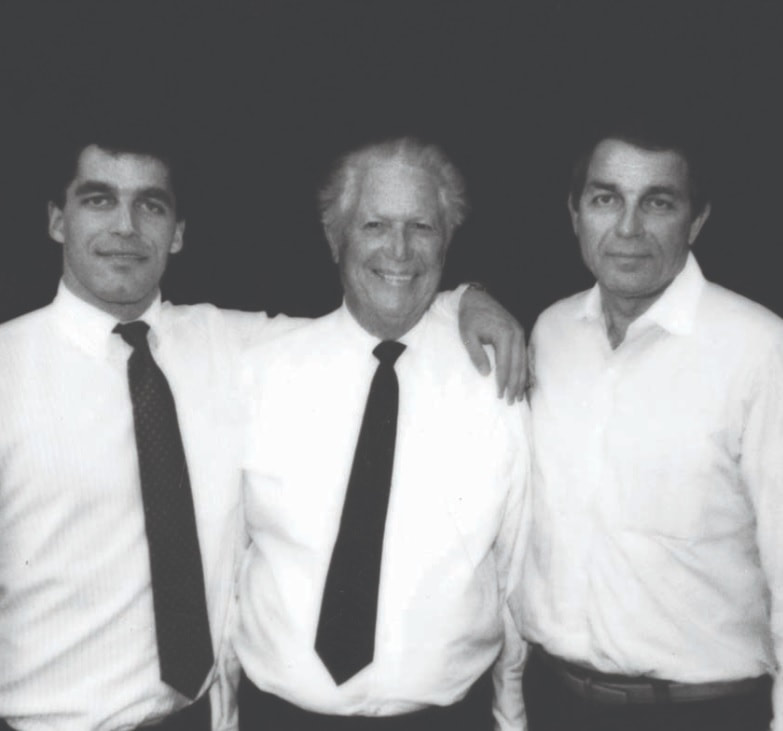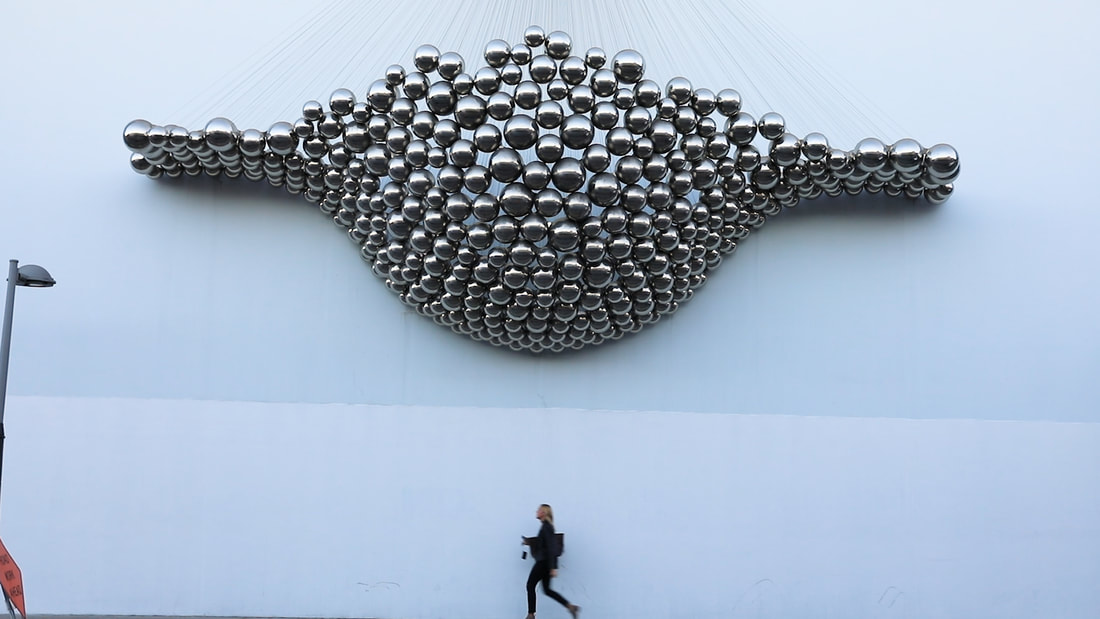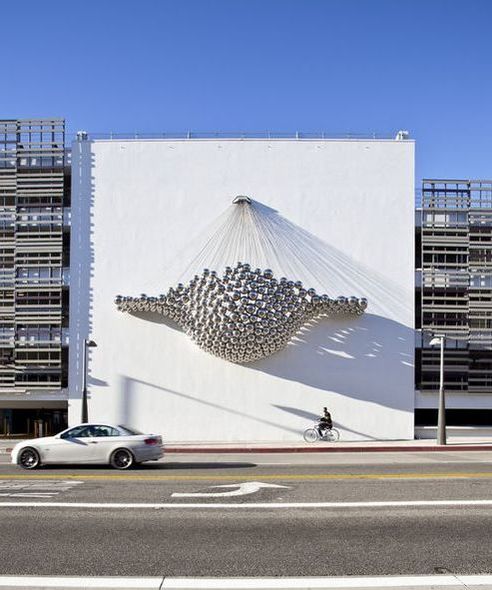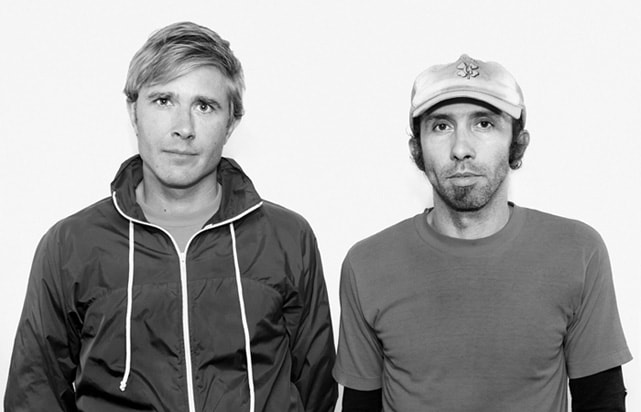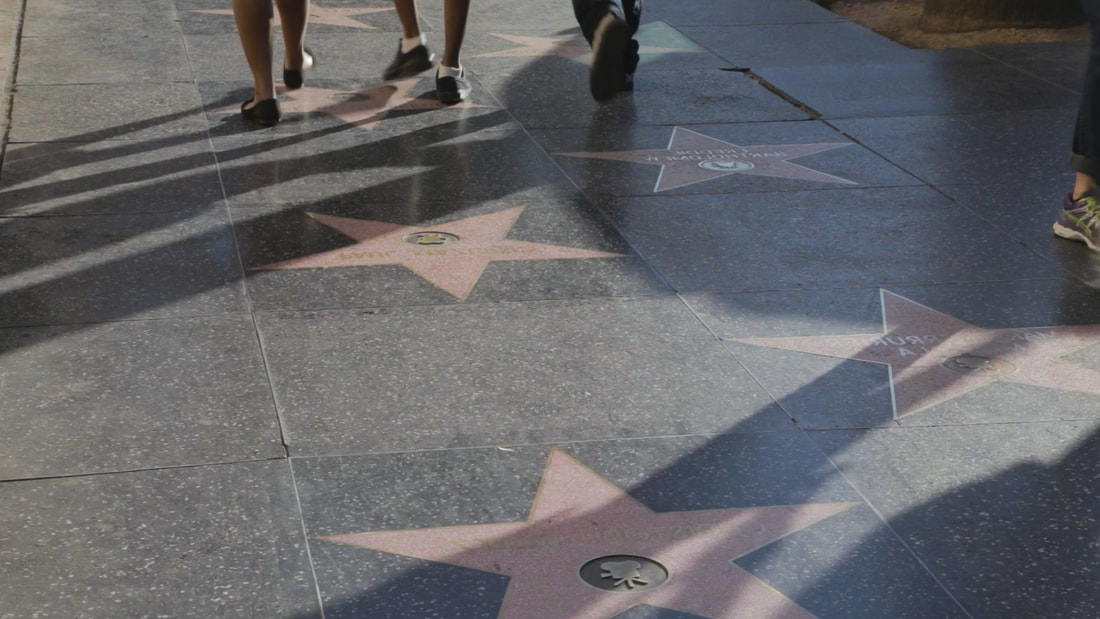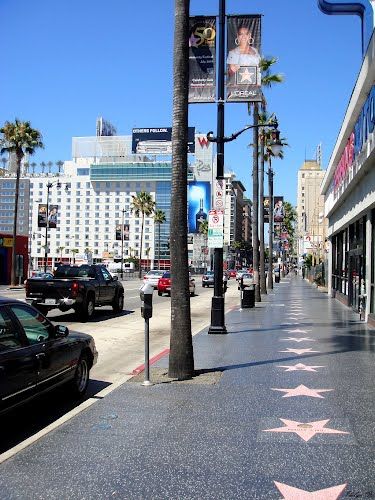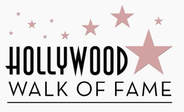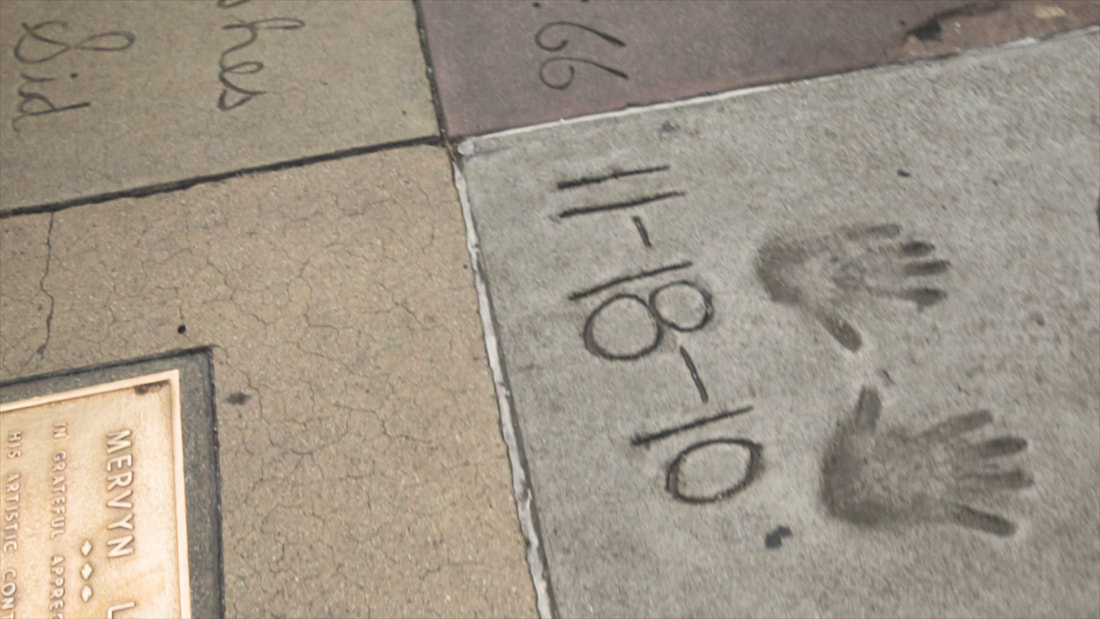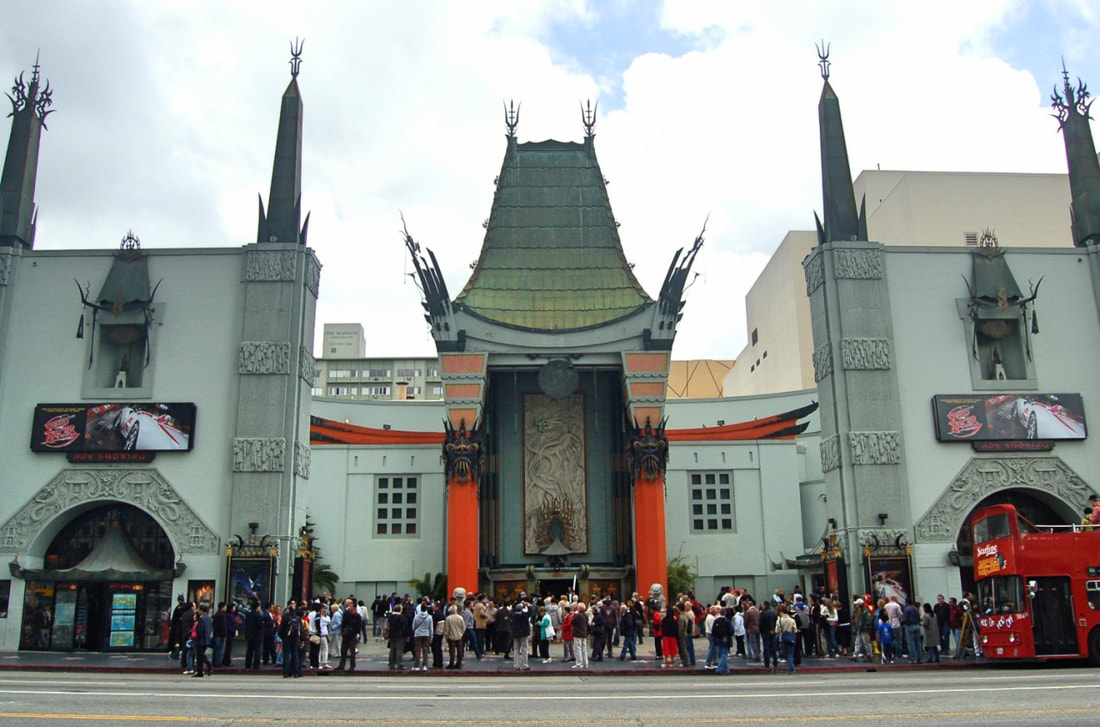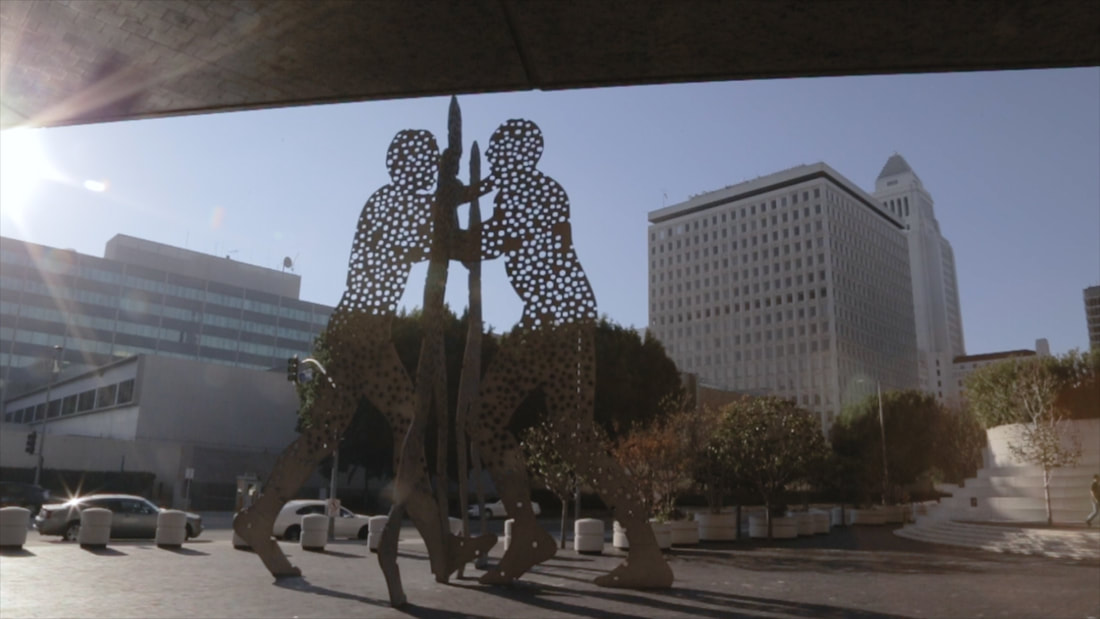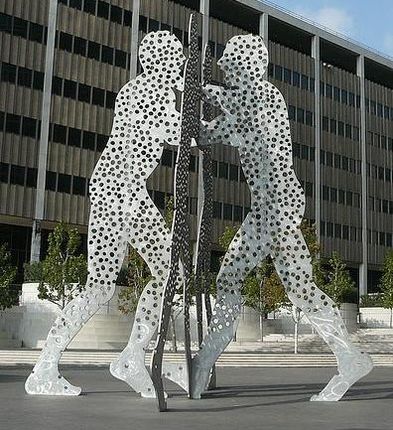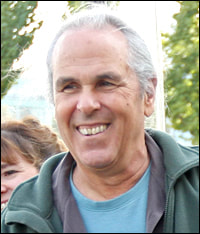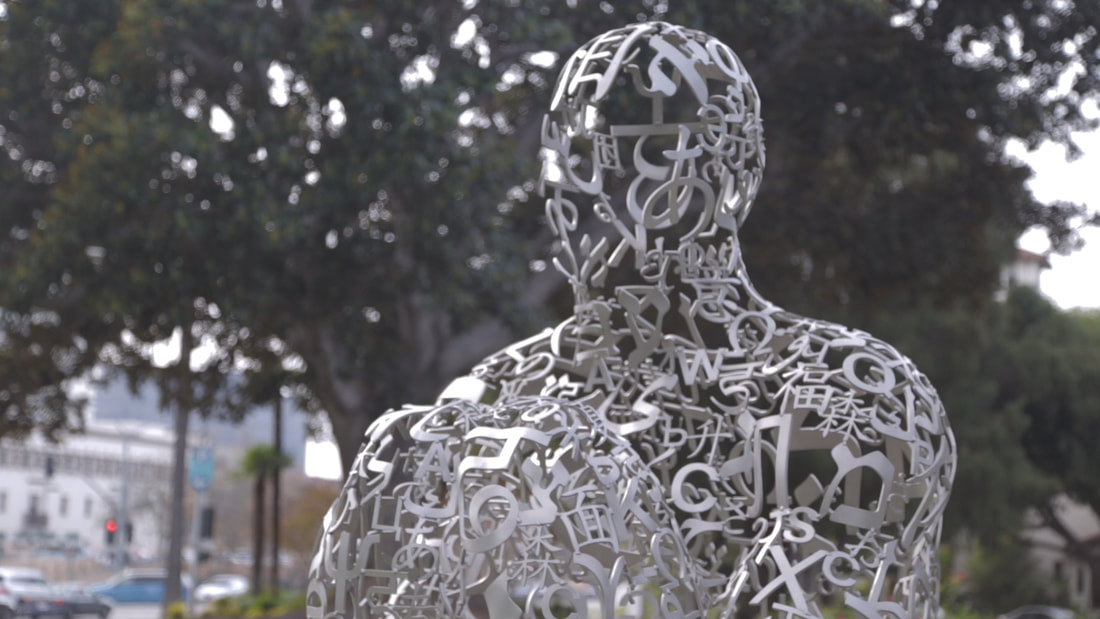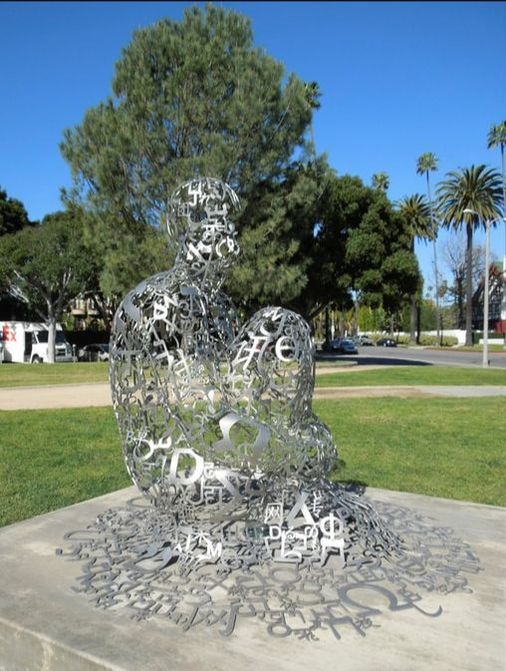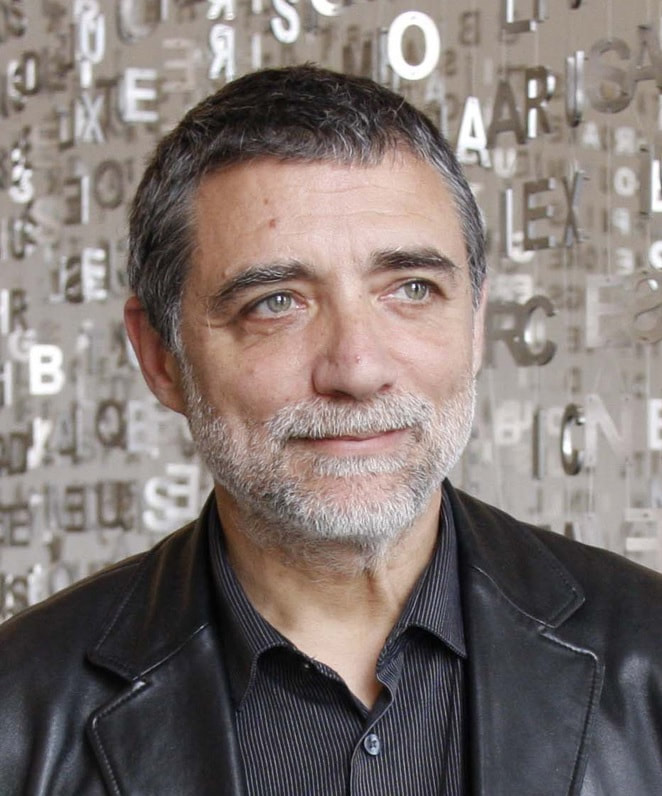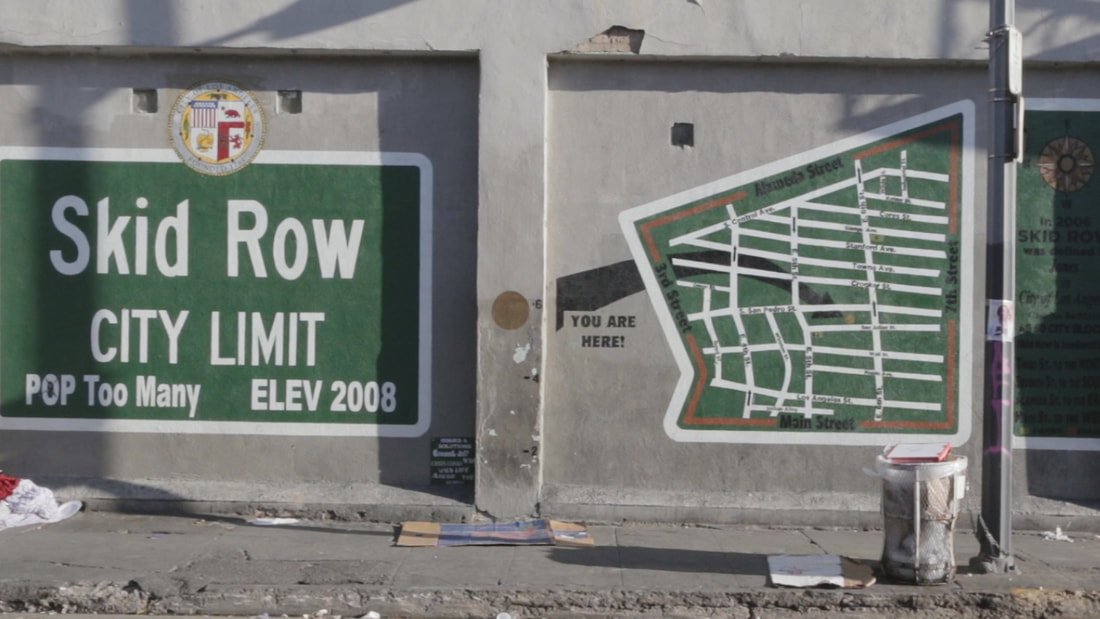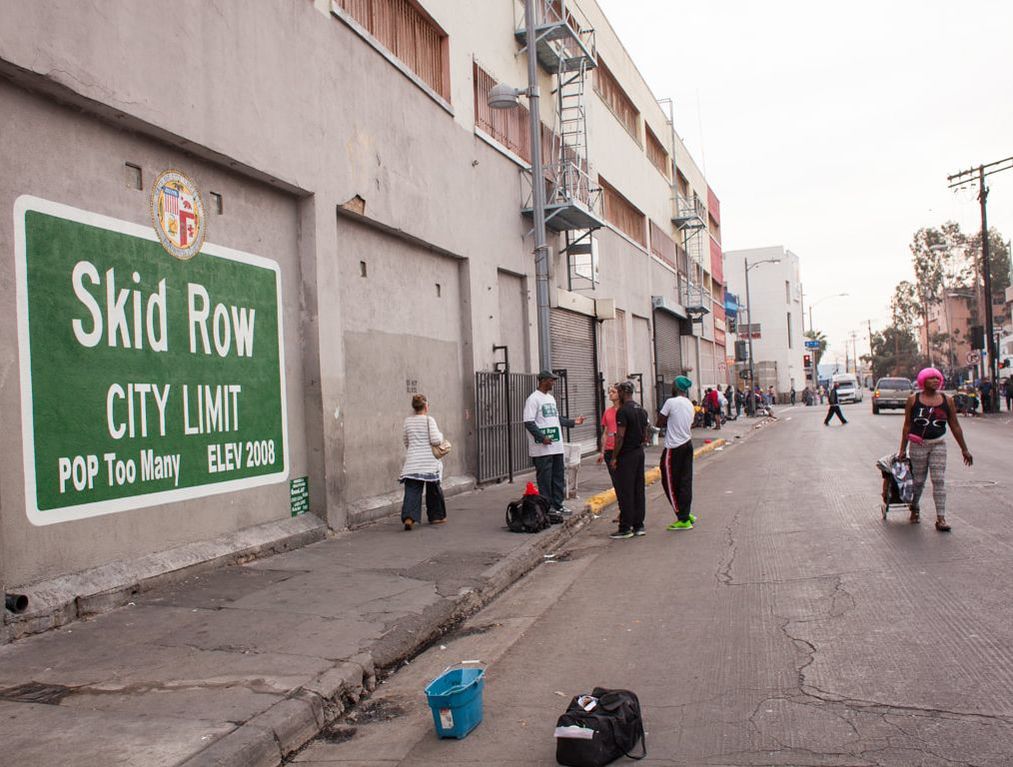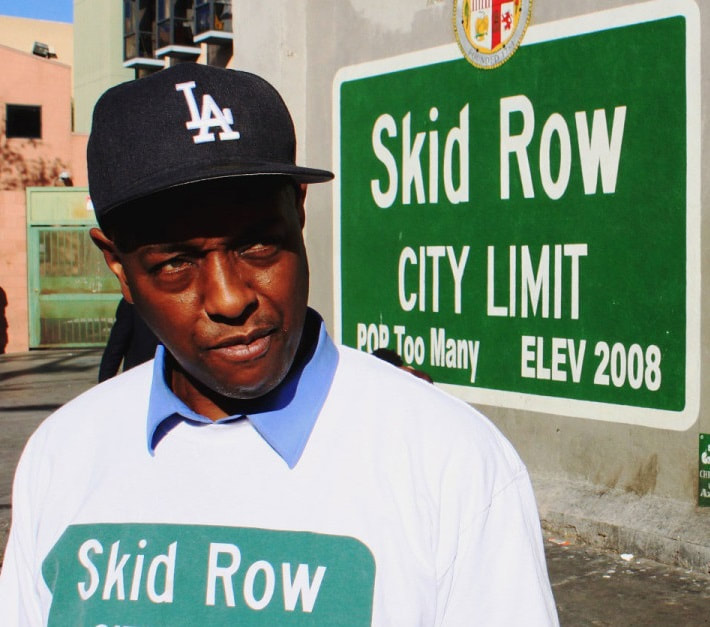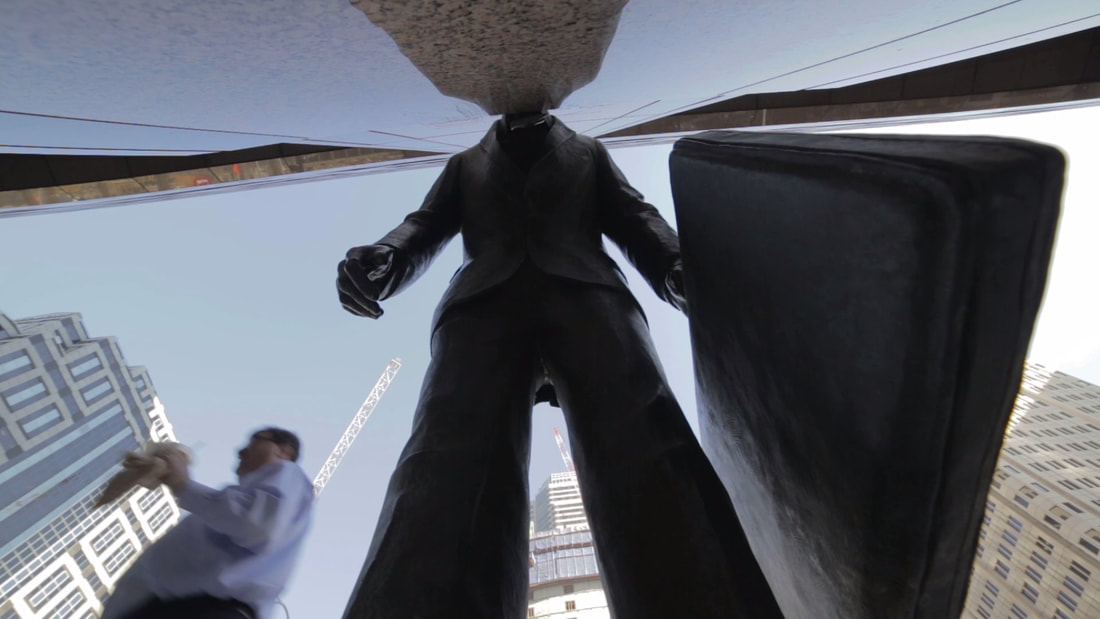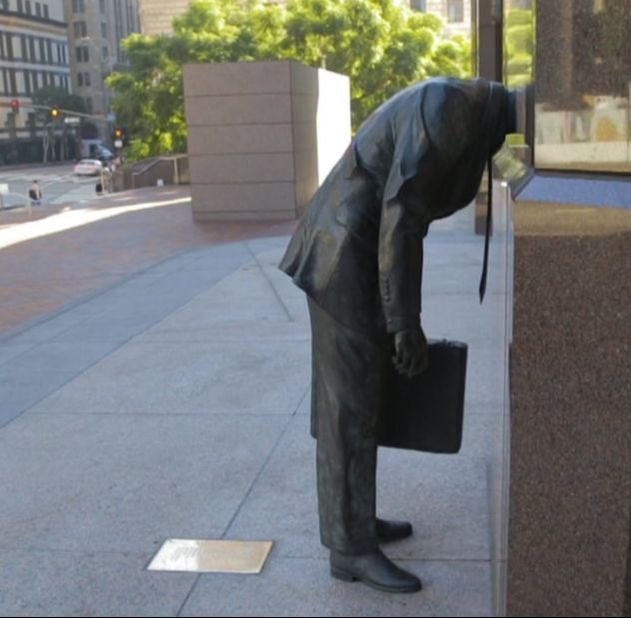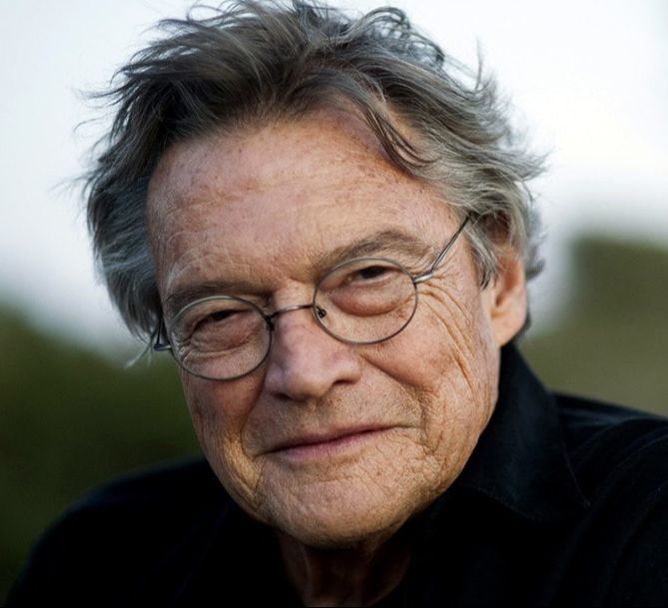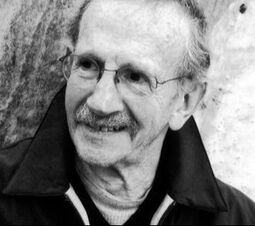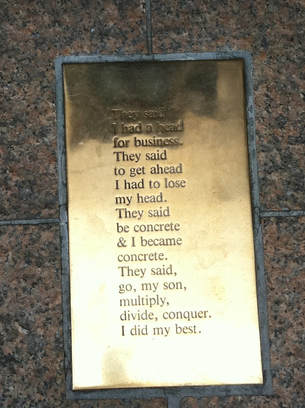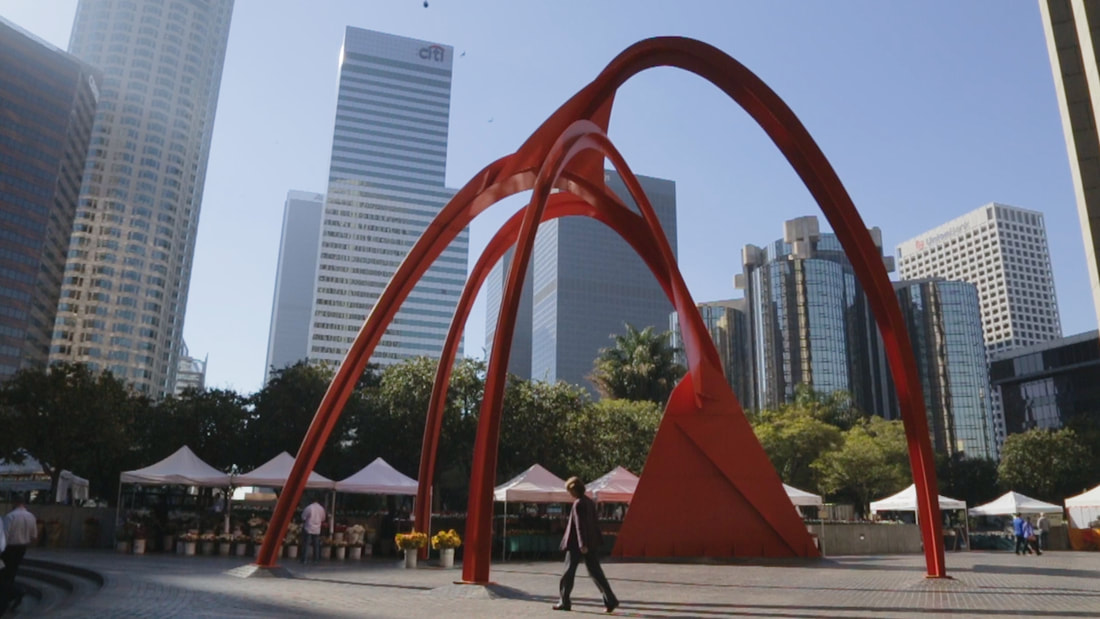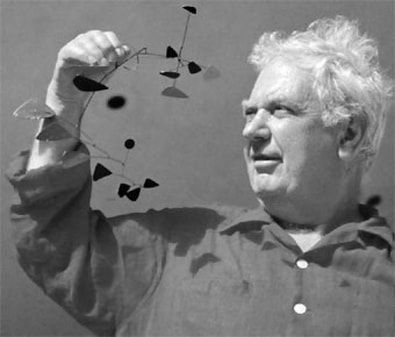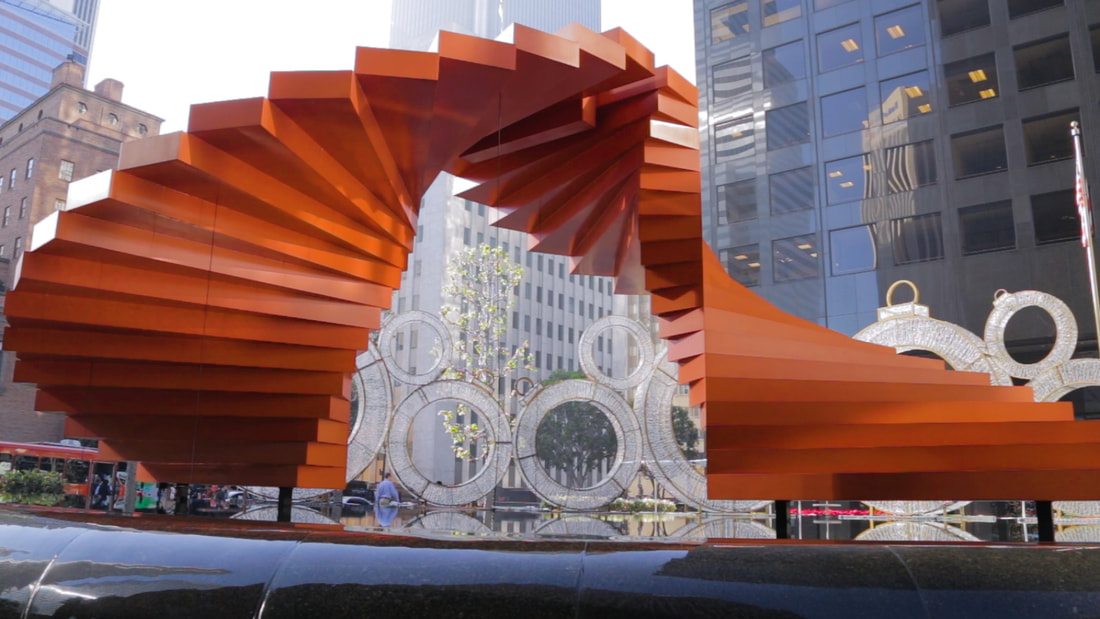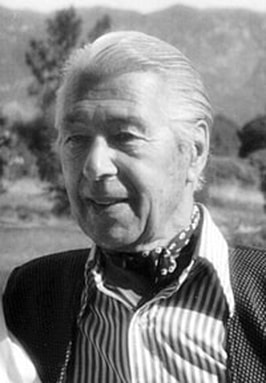Psi
Menu
LOS ANGELES
Below is a presentation of the artwork and locations in Los Angeles,
in order of appearance in the film.
Below is a presentation of the artwork and locations in Los Angeles,
in order of appearance in the film.
|
|
Los Angeles Sister Cities Signpost
|
The Los Angeles Sister Cities signpost is on the corner of Main Street and 1st Street, by the Los Angeles City Hall. A sister city is created when a community decides to join with a community in another nation to learn more about one another, and to develop friendly meaningful exchanges. The signpost indicates the direction of Los Angeles' 25 sister cities as well as the distance to them. Among the sister cities of Los Angeles are: Bordeaux (France), Beirut (Lebanon), Eilat (Israel), St Petersburg (Russia) and Tehran (Iran).
|
St Main St & E 1st St
Los Angeles, CA 90012 |
Hollywood Sign
|
The Hollywood Sign (formerly the Hollywoodland Sign) is an American landmark and cultural icon located in the Hollywood Hills in Los Angeles, California. It is made of 13.4 m (44 ft) tall white capital letters. The sign was originally created in 1923 as an advertisement for a local real estate development, costing at the time $21.000, but due to increasing recognition, the sign was left up. The sign is protected and promoted by The Hollywood Sign Trust and is a copyrighted sign, so it is illegal to copy or imitate without authorization. The sign makes frequent appearances in popular culture, particularly in films and TV shows, and has many copies/parodies around the world (such as in Le Jardin d’Acclimatation in Paris).
|
Griffith Park, Mount Lee
Hollywood Hills, Los Angeles |
Universal Studios Globe
|
The Universal Studios Globe is found at the entrance of Universal Studios Hollywood, which is both a film studio and a theme park in the Universal City community of the San Fernando Valley region of the city of Los Angeles. Universal is one of the oldest and most famous Hollywood film studios still in use. It was founded in 1912 (making it the oldest surviving studio in the USA) and is now owned by a Comcast. Its official marketing headline is "The Entertainment Capital of LA." Though the Universal Pictures' studio logo has changed throughout its history, it has always featured a globe as its centerpiece.
|
Clocktower-Monument to Unknown
George Herms
George Herms
"Clocktower-Monument to Unknown" is an art installation by George Herms in Macarthur Park in Los Angeles. It is composed of several rusted ocean buoys grouped around an 18-foot tall metal column which is topped with a (purposely broken) three-faced clock. It was installed in 1987 and is dedicated to the chess-players of Macarthur Park.
|
George Herms (born 1935) is an American artist best known for making assemblages out of discarded, often rusty, dirty or broken every-day objects, and juxtaposing those objects so as to infuse them with poetry, humor and meaning. Often called a member of the West Coast Beat movement, Herms says: "I turn shit into gold. I just really want to see something I've never seen before."
|
The Walter Pyramid
Gibbs Architects
Gibbs Architects
The Walter Pyramid is a 4,000-seat, indoor multi-purpose arena on the campus of Long Beach State University in Long Beach, California. Officially opened on November 30, 1994, the Walter Pyramid was designed by Don Gibbs and built by the Nielson Construction Company of San Diego. Construction cost approximately $22 million. Each side of the perimeter of the pyramid measures 105 meters (345 feet), making it a mathematically true pyramid. It rises 18 stories above the Long Beach skyline and its exterior is uniformly clad in sheets of dark-blue corrugated aluminum. It is currently home to the Long Beach State 49ers men's and women's basketball and volleyball teams.
|
Founded in 1934 by Hugh Gibbs, Gibbs Architects is a third generation exceptional design and solutions oriented firm: founder Hugh Gibbs, son Don Gibbs (who designed the Walter Pyramid) and grandson Kurt Gibbs (current director). For over 80 years, Gibbs has valued service together with innovation to bring about great design.
|
1250 N Bellflower Blvd,
Long Beach, CA 90840, États-Unis |
Cradle
Ball-Nogues Studio
Ball-Nogues Studio
Commissionned by the City of Santa Monica, "Cradle" is situated on the exterior wall of a parking structure at a shopping mall - originally designed by Frank Gehry. An aggregation of mirror polished stainless steel spheres, the sculpture functions structurally like an enormous Newton's Cradle. Each ball is suspended by a cable from a point on the wall and locked in position by a combination of gravity and neighboring balls.
|
Ball-Nogues Studio is an integrated design and fabrication practice operating in a territory between architecture, art and industrial design, led by Benjamin Ball and Gaston Nogues. Essential to each project is the "design" of the production process itself, with the aim of creating environments that enhance sensation, generate spectacle and invite physical engagement.
|
Broaway & 4th
Santa Monica, CA 90401, USA |
The Hollywood Walk of Fame
The Hollywood Walk of Fame comprises more than 2,500 five-pointed terrazzo and brass stars embedded in the sidewalks along 15 blocks of Hollywood Boulevard and three blocks of Vine Street in Hollywood, California. The stars are permanent public monuments to achievement in the entertainment industry, bearing the names of a mix of actors, musicians, directors, producers, musical and theatrical groups, fictional characters, and others.
|
The Walk of Fame is administered by the Hollywood Chamber of Commerce and maintained by the self-financing Hollywood Historic Trust. It is a popular tourist destination, with a reported 10 million visitors in 2003. The Hollywood Chamber of Commerce credits E.M. Stuart, its volunteer president in 1953, with the original idea for creating a Walk of Fame as a means to "maintain the glory of a community whose name means glamour and excitement in the four corners of the world."
|
Celebrity Prints
TCL Chinese Theatre
TCL Chinese Theatre
|
The TCL Chinese Theatre is a famous cinema palace located on the historic Hollywood Walk of Fame in Hollywood. Not only does it host major film premiers, but it has become an important tourist attraction. Among the theater's most distinctive features are the concrete blocks set in the forecourt, which bear the signatures, footprints, and handprints of nearly 200 popular motion picture personalities from the 1920s to the present day.
|
Molecule Man
Jonathan Borofsky
Jonathan Borofsky
“Molecule Man” is a monumental sculpture by American artist Jonathan Borofsky. It was designed with four 32’ high aluminum plates representing the silhouettes of four athletes embracing after a championship victory. Borofsky wrote the following about the piece: “I had been fascinated by the fact that the human body, though appearing quite solid, is mostly made up of water. In fact 97% of our body is made up of a water molecule which is ‘sea’ or salt water based […]. Each of us is part of a biological chain: atoms to molecules, molecules to compounds, compounds to cells, cells to tissues, tissues to organs and finally, organs to organisms. My art is a record of my investigation of the human condition."
|
Jonathan Borofsky (born in 1942) is an American sculptor and printmaker. He studied at France's Ecole de Fontainebleau and later at Yale. In 1999, three of his Molecule Man sculptures, standing 100 feet tall, were set directly into the Spree River in Berlin.
|
Endless V
Jaume Plensa
Jaume Plensa
|
Endless V is a 8-foot stainless steel sculpture created in 2012 by Spanish artist Jaume Plensa symbolizing the body and mind. Plensa has other similar sculptures around the world, such as:
Jaume Plensa was born in 1955 in Barcelona. He has been a teacher at the École nationale supérieure des Beaux-Arts in Paris and regularly cooperates with the School of the Art Institute of Chicago. Aside from being exhibited in many museums and galleries around the world, many of his sculptures can be found in public spaces in Spain, France, Japan, England, Korea, Germany, Canada and the USA.
|
Beverly Gardens Park,
Beverly Hills, CA 90210, USA |
Skid Row City Limits Mural
Winston Death Squad
Winston Death Squad
The Skid Row City Limits Mural is an 18-by-50 foot mural displayed on San Julian Street in downtown Los Angeles, depicting the city limits of the Skid Row neighborhood. Skid Row is home to one of the largest stable populations of homeless people in the United States (between 3,000 and 6,000). Many human services organizations are there to help them recover and be self-sufficient again. The mural project was organized in 2014 by Skid Row activist General Jeff Page with local street art crew Winston Death Squad. It was carried out solely with the labor of Skid Row citizens and without the aid of any service organizations.
|
“It is the only place in our community where you will see the name ‘Skid Row’ in public. Now, folks will come from all over the world to take a photo in front of this mural just as they do with the iconic Hollywood sign”, says General Jeff. Los Angeles City Councilman José Huizar's office has hailed the mural, saying, "It's community pride on the one hand, it's cleverly done and it creates conversation and debate, which often great public art does."
|
528 San Julian Street,
Los Angeles, CA 90013 |
Corporate Head
Terry Allen & Phillip Levine
Terry Allen & Phillip Levine
|
"Corporate Head" is a sculpture located outside the Ernst & Young Building in Downtown Los Angeles. Created in 1990 by artist Terry Allen, it takes aim at the values and ethics of the foot soldiers and icons of the Reagan-Bush years, critiquing the greed and the lack of moral direction that define corporate mentality. On the ground is a poem by Adam Levine which is intended to be read standing like the statue, conveying further meditation on the economic pressures to survive.
Ernst & Young Building
725 S Figueroa St #1600, Los Angeles, CA 90017 |
Four Arches
Alexander Calder
Alexander Calder
"Four Arches" is an abstract monumental sculpture made by American artist Alexander Calder in 1974, and located in the Bank of America Center in downtown Los Angeles. It is made of carbon plate steel and painted a bold vermilion. This striking sculpture serves as a distinctive landmark that beautifully frames the surrounding buildings and a small nearby park area. After its installation, "Four Arches" became part of the large collection of art amassed by Security Pacific National Bank.
|
Alexander Calder (1898 –1976) was an American sculptor known as the originator of the mobile, a type of moving sculpture made with delicately balanced or suspended shapes that move in response to touch or air currents. In contrast, Calder’s monumental stationary sculptures such as "Four Arches" are called stabiles. In 1987, the Calder Foundation was established by Calder's family. The foundation "is dedicated to collecting, exhibiting, preserving, and interpreting the art and archives of Alexander Calder and is charged with an unmatched collection of his works."
¤ Other Calder works in Ψ: "Homage to Jerusalem" in Jerusalem and "The Red Spider" in Paris. |
333 S Hope St, Los Angeles, CA 90071, US
|
Double Ascension
Herbet Bayer
Herbet Bayer
|
"Double Ascension" is a sculpture by Herbert Bayer that was dedicated on January 20, 1973. Commissioned by ARCO, it was originally titled "Stairway to Nowhere" but Bayer changed it at the request of company officials. Rising from a circular fountain like two spiraling staircases, its 20-feet high, bright orange-red aluminum steps are a bold contrast to the surrounding dark colors and materials. Differences in light intensity on the individual steps are an illusion from the light below reflecting at different angles.
Herbert Bayer (1900 – 1985) was an Austrian and American graphic designer, painter, photographer, sculptor, art director, environmental and interior designer, and architect, who was widely recognized as the last living member of the Bauhaus.
|
515 S Flower St.
Los Angeles, CA 90071 |
[email protected]
© COPYRIGHT 2022. ALL RIGHTS RESERVED.
© COPYRIGHT 2022. ALL RIGHTS RESERVED.
